How, when and how to feed a pumpkin during flowering and fruiting: advice from gardeners and common mistakes
It is not uncommon for gardeners to sell large and ripe pumpkins at agricultural fairs. Buyers have a question: "Is the pumpkin so ugly, or is it some kind of expensive variety?" Everything is simple here: proper fertilization plays an important role in the ripening of a vegetable crop.
In the article, we will figure out how to feed the pumpkin during flowering and fruiting in order to get a rich harvest.
The content of the article
Fertilizing during flowering and fruiting
Pumpkin is in many ways an unpretentious plant, but it needs regular feeding in order for the fruits to ripen large. The composition of the soil (it is prepared in the fall) and the complex fertilization of the crop are important. The strong root system of the bushes absorbs a lot of nutrients, so the optimal amount will make it easier to set the pumpkins.
The development of culture is 3–3.5 months. During this time, the green mass grows, the fruits are formed. The weight of individual specimens reaches 40 kg.
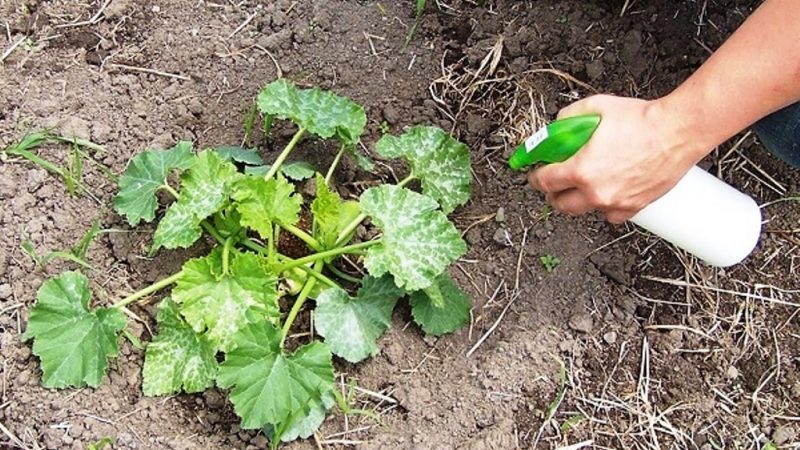
How and what to fertilize pumpkin
When growing a vegetable crop, it is provided with:
- the presence of sunlight, open area;
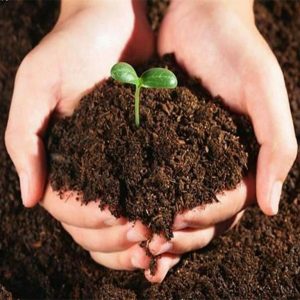
- fertile soil;
- regular watering and feeding.
For the pumpkin to grow well, it must receive the main micro and macro elements:
- nitrogen - introduced during planting, prevents growth retardation, wilting of leaves;
- potassium - used at the flowering stage, relieves leaves from damage;
- phosphorus - important in the formation of ovaries, fruit development.
Fertilize the culture with organic matter (manure, compost, herbal infusions, mullein, peat, bird droppings), mineral or complex agents. Dry substances are introduced into the holes or scattered, dug up the soil with them. Liquid is used for watering, spraying (they are used before noon).
Number of dressings per season
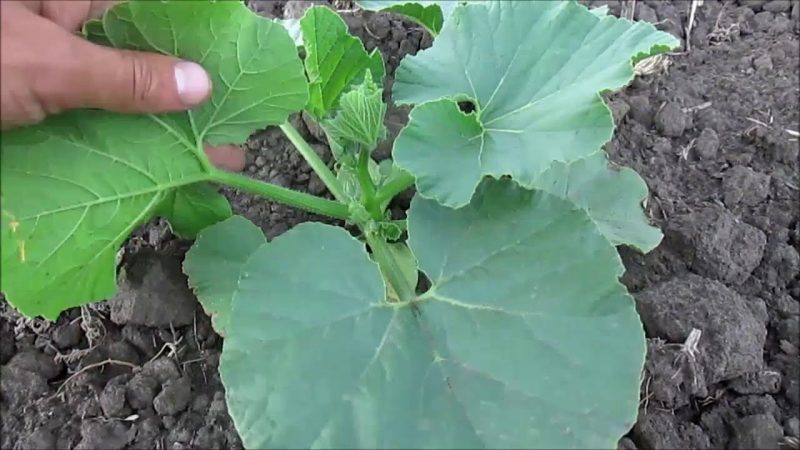
The number of fertilizers depends on the fertility of the soil.In the soil rich in nutrients, fertilize the culture 3-4 times per season:
- after landing in open ground;
- before the formation of ovaries;
- during flowering and during fruit formation.
If the land is infertile, this amount of fertilizing will not be enough: they are applied every 10-14 days. Organic and minerals alternate. Additionally, the soil is saturated in the fall:
- manure, compost - 3-5 kg / m2;
- superphosphate (25 g), potassium salt (15 g), ammonium nitrate (25 g) per 1 m2;
- wood ash.
The crop grows best on compost heaps. Therefore, since autumn, slides are formed from plant residues, sprinkled with earth a little and covered with a special film. The next year, seeds or seedlings are planted in these heaps.
Do I need to feed with nitrogen in this case? No, because there is already enough of it in the soil. With this method of cultivation, organic fertilizers are applied during the season after the formation of two leaves, and mineral fertilizers - when ovaries appear.
Terms of feeding
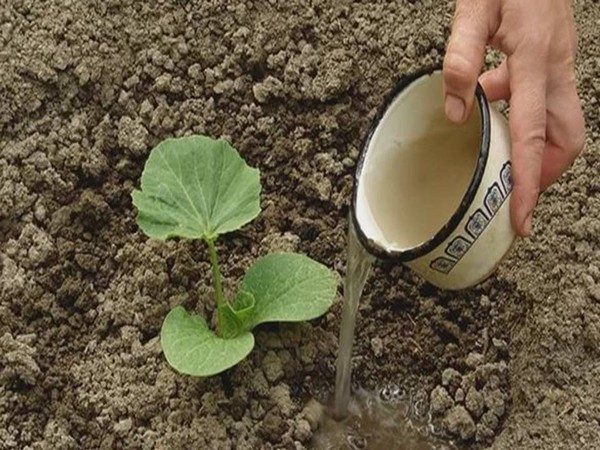
Top dressing of plants depends on their vegetation stage and growing area.
In the northern regions, the culture is grown through seedlings. In this case, the sprouts are fertilized for the first time with organic matter when the second leaf appears, usually on the tenth day. A week before transplanting, the same composition is introduced so that the bushes better adapt to new conditions. 1.5 weeks after the pick and at the stage of lash formation, complex mineral or organic fertilizers are applied.
In a southern climate, pumpkin seeds are planted directly into the ground. The first top dressing is applied at the stage of 4-5 leaves, the next one - during the formation of lashes.
reference... The nutrient concentration for young plants is cut in half as the packs indicate the values for mature plants.
Fertilization scheme by month
In the fall, gardeners prepare the ground for the new season. Weeds are weeded, if the earth has been dug up, manure, potassium, phosphorus or complex means are introduced.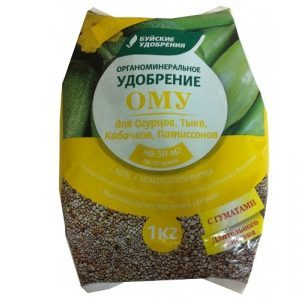
If the land is not prepared, then in the spring (April - May) it is fertilized. Compost or humus is applied directly to the plant wells, covered with sand. Only after that do the seedlings dive or plant seeds.
At the flowering stage, in July, potash compounds are introduced, azophoska (3 tbsp. L. Per bucket of water). Mineralize the soil with phosphorus, nitrogen. Before laying the fruits and with their active formation (in late August - early September), the culture is fertilized with organic matter, azofos (4 tablespoons each).
Two weeks before harvest, feeding is stopped to preserve the juicy and tasty pulp of the pumpkin.
It is interesting:
How, when and what to feed the beets in July-August.
When and what kind of fertilizer to apply in the fall under the garlic.
Folk remedies
Popular among gardeners are folk remedies for feeding pumpkins in the open field. It is not difficult to prepare such compositions.
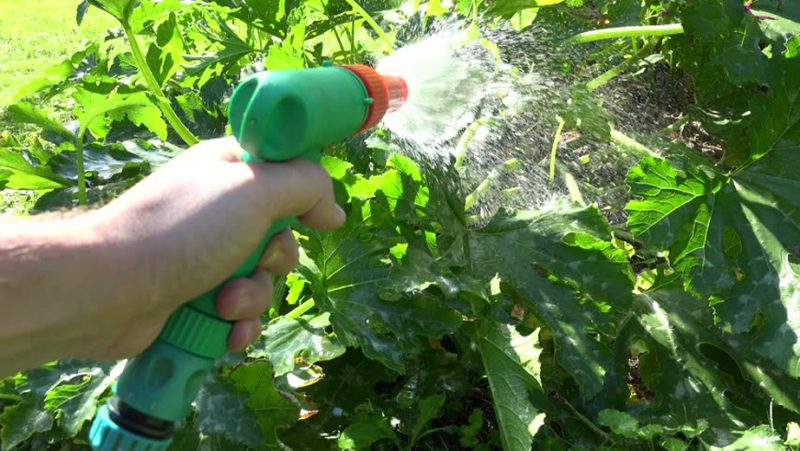
Ash
Wood ash is a rich source of various trace elements. It reduces the acidity of the soil, while picking improves the adaptation of the crop to new conditions.
200 g of ash is used per 1 m2 of land. Pour it into the holes.
reference... At the stages of flowering and fruit formation, an ash solution is used. To do this, add 100 g of fertilizer to a bucket of water. Water the bushes at the root.
Manure
The organic product contains phosphorus, magnesium, potassium, which are important for the development of pumpkin. Fertilizer reduces the acidity of the soil, excess salts, increases its fertility, the resistance of bushes to chemicals. With the growth of bushes and ripening of fruits, slurry is used: it is watered with 2 liters at the root when the green mass is formed, 3 liters each - when the pumpkins are formed.
To prepare a liquid fertilizer, one bucket of manure is diluted with five buckets of water, insisted for three days, stirred, and five more buckets of liquid and 100 g of superphosphate are added. The soil is well moistened, top dressing is applied to the dug grooves around the bushes.
Chicken droppings
The product is rich in phosphorus, nitrogen, magnesium, potassium, calcium.
It is diluted with water in a ratio of 1:20, insisted for 10 days. Water only along the furrows around the bushes so as not to burn the roots.
Mineral fertilizers
When cultivating pumpkin, organic means alternate with mineral ones. They promote the formation of juicy large fruits, suitable for the flowering stage.
The first top dressing consists of 15 g of ammophoska, 15 g of urea and 10 l of water or 8 g of superphosphate, 5 g of potassium salt and ammonium nitrate per bucket of water. The second - from a mixture of phosphorus and superphosphate (20-30 g per bucket of liquid). Potassium sulfate solution is added for the third time.
Various types of complex mineral fertilizers are presented on the shelves of gardening shops. They contain both phosphorus, potassium and nitrogen, as well as other trace elements.
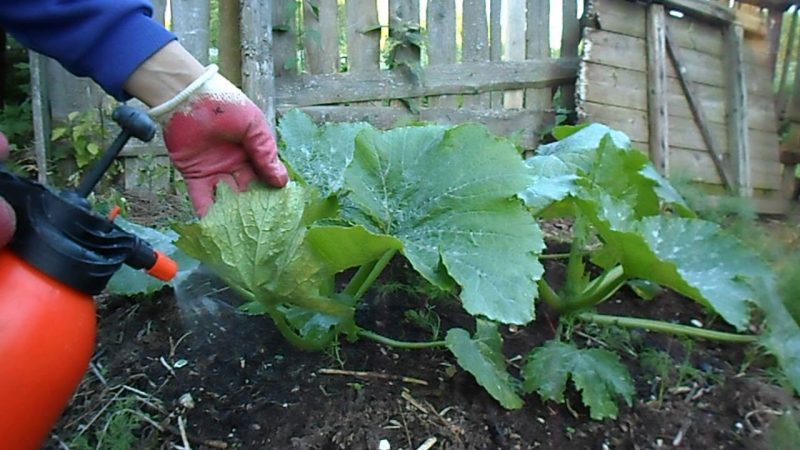
Is it possible to spray with boric acid
Boric acid is one of the important elements for ripening fruits, increasing the duration of flowering in many crops, including pumpkin... Boron does not oxidize the soil, does not accumulate in the bushes, therefore vegetables after processing plants are safe for humans.
Dilute 1 g of powder in 1 liter of warm water. The resulting solution is sprayed with pumpkin in the morning or evening in calm, cool weather. This foliar dressing is applied twice, with an interval of 1-2 weeks. With the simultaneous introduction of other mineral compositions, the concentration of boric acid is reduced to 0.5 g.
Attention! They work with the product carefully: put on protective equipment so that the substance does not get on the skin.
Purchased dressings
For fertilization of vegetable crops, ready-made substances are used: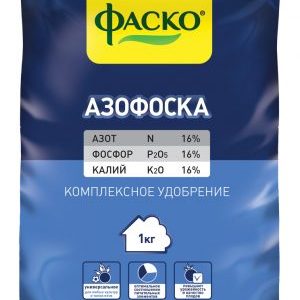
- "Kemiru Lux", "Kemiru Kombi" (in addition to the main elements, they contain iron, manganese, bromine, copper, molybdenum, zinc);
- Juno (rich in potassium);
- Azofosku (complex nitrogen-phosphorus-potassium fertilizer).
Fertilization errors
A high concentration of nitrogen compounds adversely affects the appearance of the bushes, provoking the appearance of powdery mildew. The fruits begin to absorb nitrates that are harmful to the human body.
When dry fertilizers are applied without moistening the soil, burns form on the leaves and roots of the pumpkin, the plants die.
When feeding crops, they make sure that microelements do not exceed the permissible concentration rate, they carefully approach the selection of ready-made fertilizers.
Read also:
Conclusion
Although pumpkin is an unpretentious plant, it needs systematic and correct feeding, fertile soil, and sufficient lighting. The beds have been prepared since the fall, dug up, fertilized. At each stage of the culture's growth, the appropriate nutrients are added.
Organic and mineral compositions alternate, they monitor the concentration of elements so that it does not exceed the norm. The key to obtaining a rich harvest of tasty fruits is competent fertilization of the culture.